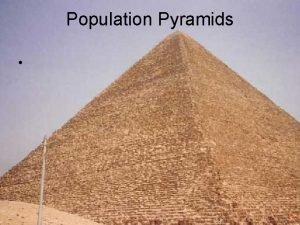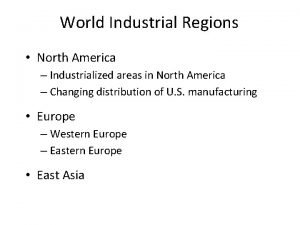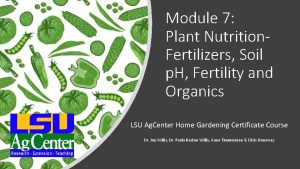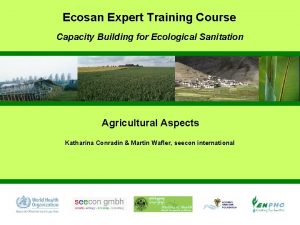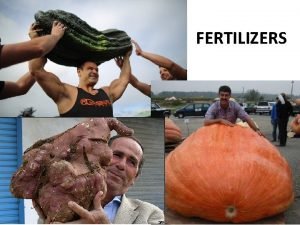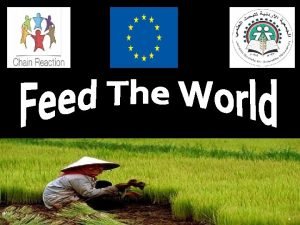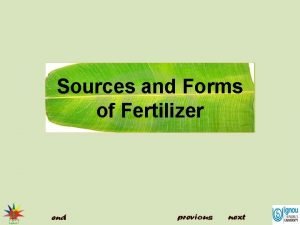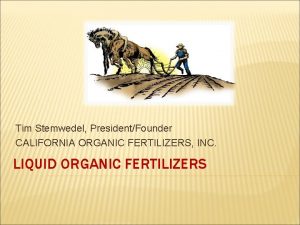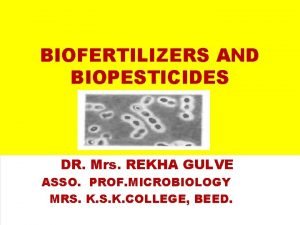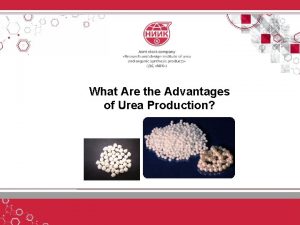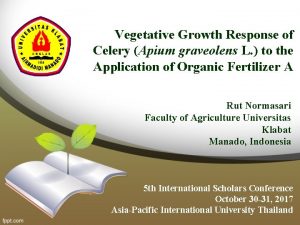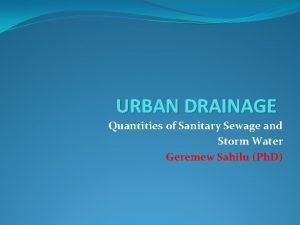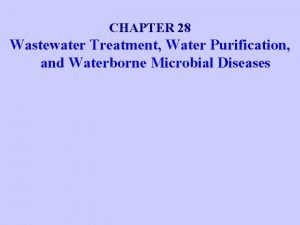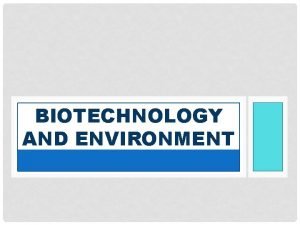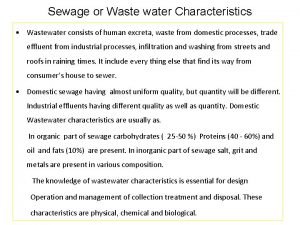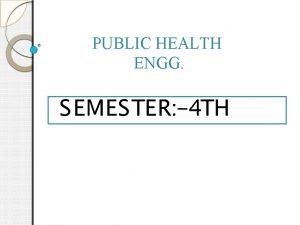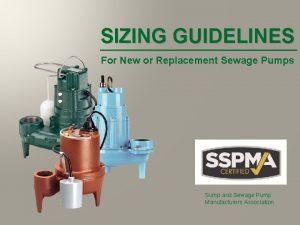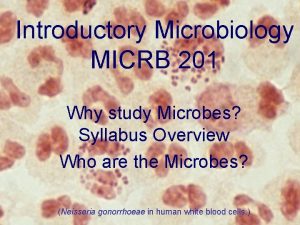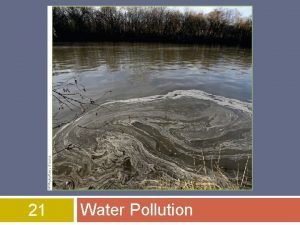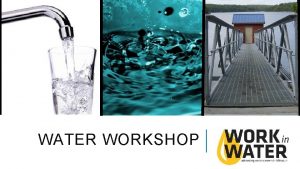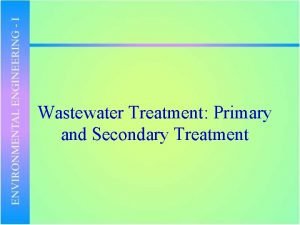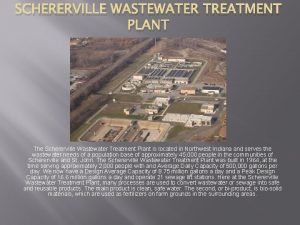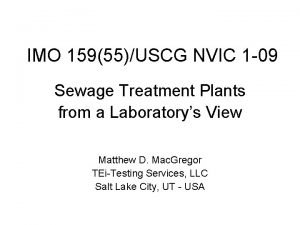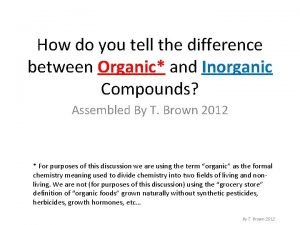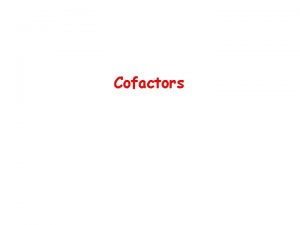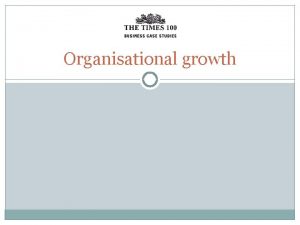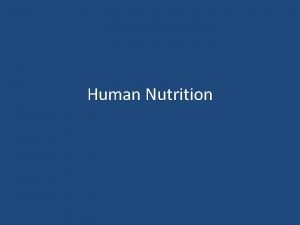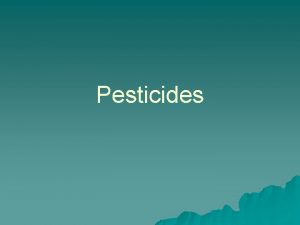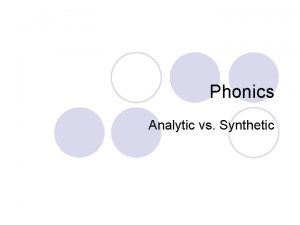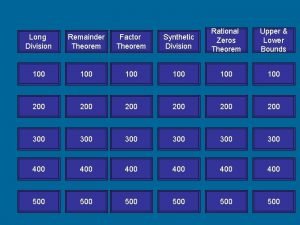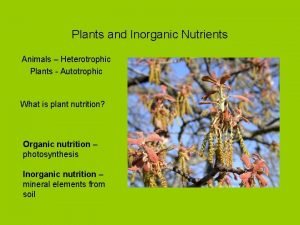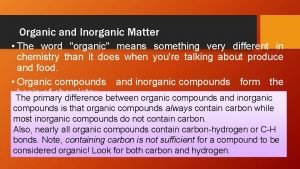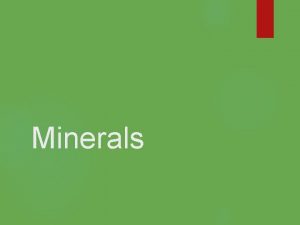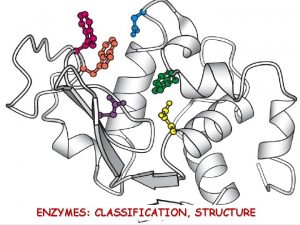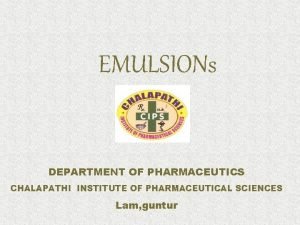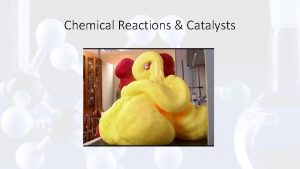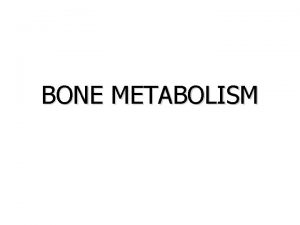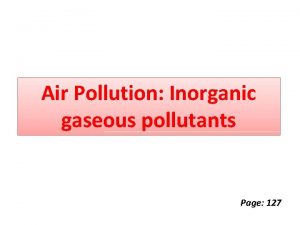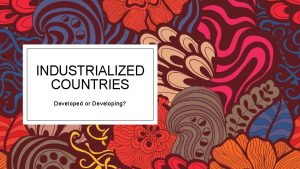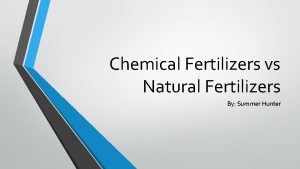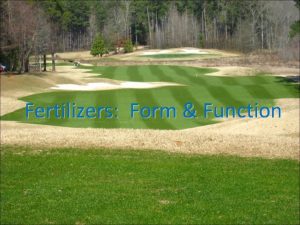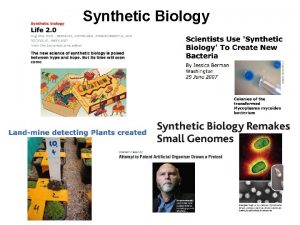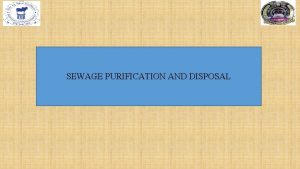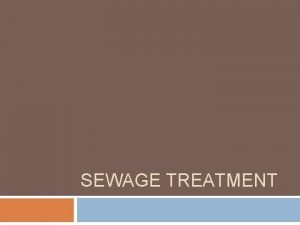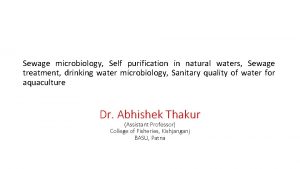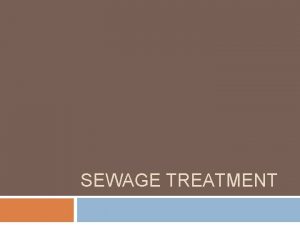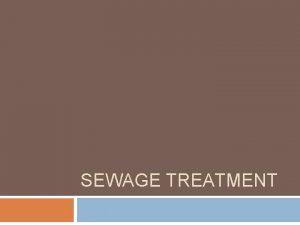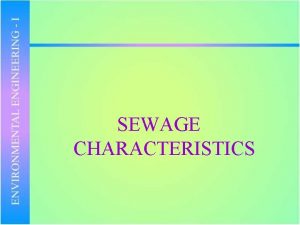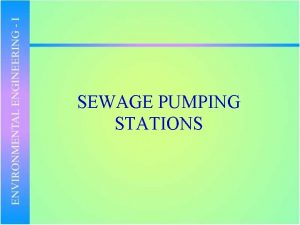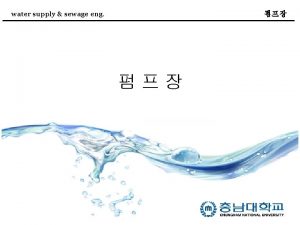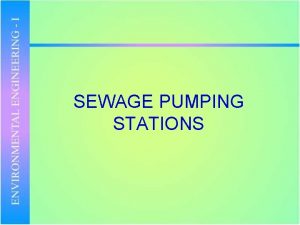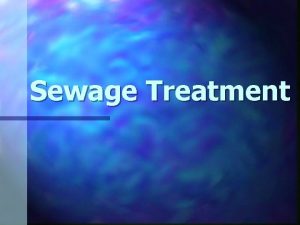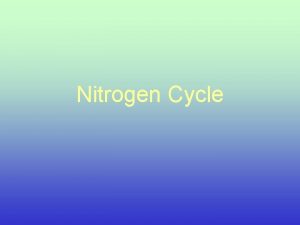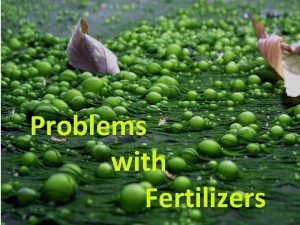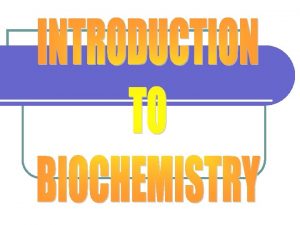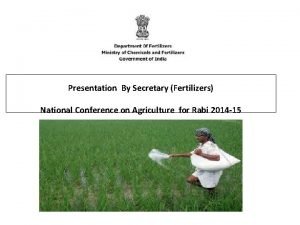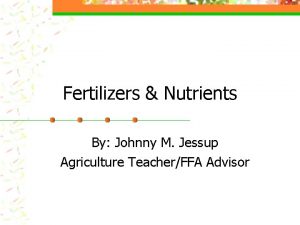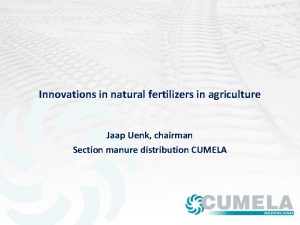Industrialized Agriculture Uses synthetic inorganic fertilizers and sewage

































































- Slides: 65

Industrialized Agriculture • Uses : -synthetic inorganic fertilizers and sewage sludge to supply nutrients -synthetic chemical pesticides -conventional and genetically modified seeds -antibiotics and growth hormones to produce meat and meat products -fossil fuels (mostly oil and natural gas) in production • Produces significant air and water pollution and greenhouse gases • Is globally export-oriented Fig. 12 -1 a, p. 277

Organic Agriculture • Uses: -Soil erosion control -organic fertilizers such as animal manure and compost -crop rotation and biological pest control -no genetically modified seeds -no antibiotics or growth hormones to produce meat and meat products • Produces less air and water pollution and greenhouse gases • Is regionally and locally oriented Fig. 12 -1 b, p. 277

Food Security and Health • Food security • All or most people in a country have daily access to enough nutritious food to lead active and healthy lives • Food insecurity • Chronic hunger and poor nutrition • Root cause: poverty • Political upheaval, war, corruption, bad weather

Keys to a Healthy Diet • Macronutrients • Carbohydrates – wheat, corn, rice • Proteins – animal and plant products • Fats – animal and plant oils, nuts • Micronutrients • Vitamins (A, B, C, D, E) • Minerals (ex. Ca, Fe, K…)

Chronic Hunger and Malnutrition • Chronic undernutrition: hunger due to low caloric intake • • Chronic malnutrition: lack of key nutrients in diet Stunted growth and development Vulnerable to disease Est. 800 million under/malnourished worldwide • Famine: severe food shortage • Drought, flooding, war, other catastrophes

World Hunger Figure 15, Supplement 8

Many People Do No Get Enough Vitamins and Minerals • Most often vitamin and mineral deficiencies in people in less-developed countries • Vitamin B 1 (thiamine) - Beriberi • Vitamin D, Ca, K - Rickets • Iodine - Goiter • Vitamin C - Scurvy

Many People Have Health Problems from Eating Too Much • Overnutrition • Excess body fat from too many calories and not enough exercise • Similar health problems to those who are underfed • Lower life expectancy • Greater susceptibility to disease and illness • Lower productivity and life quality • Est. 79 million US adults are overweight/obese • Est. $150 billion in health care costs

Many People Have Health Problems from Eating Too Much • Est. 79 million US adults are obese (1/3 of population) • Est. $150 billion in health care costs Obesity Among U. S. Adults, 2013

12 -2 How Is Food Produced? • Concept 12 -2 We have used high-input industrialized agriculture and lower-input traditional methods to greatly increase supplies of food.

Maintaining Soil Health • Soil composition • • • Eroded rock Mineral nutrients Decaying organic matter Water Air Microscopic decomposers

Moss and lichen Organic debris Rock fragments Grasses and small shrubs Oak tree Honey fungus Fern Millipede Earthworm Wood sorrel O horizon Leaf litter A horizon Topsoil Mole Bacteria B horizon Subsoil Fungus C horizon Parent material Mite Root system Red earth mite Beetle larva Nematode Fig. 12 -A, p. 284

Maintaining Soil Health • Farming and crops by definition reduce soil health • Crops remove nutrients • Machinery can compress (or erode) soil • Key goal – find ways to maintain soil health

Food Production Has Increased Dramatically • Three systems produce most of our food • Croplands: 77% of our food on 11% world’s land area • Rangelands, pastures, and feedlots: 16% of our food on 29% of world’s land area • Aquaculture: 7% of our food • Key dominant crops: • • • Corn Wheat Soy Rice Oil seed plants (canola, sunflower, rapeseed)

Industrialized Crop Production Relies on High-Input Monocultures • Industrialized agriculture: high-input, monoculture/plantation crops • Goal is to steadily increase crop yield • Grow more food per acre (maintain land area used) • Increased use of greenhouses to raise crops

Example – Missouri corn crops Acres planted compared (below) compared to yield (right)

Heavy Equipment Used to Harvest Wheat in the United States Fig. 12 -4, p. 281

Plantation Agriculture: Oil Palms on Borneo in Malaysia Fig. 12 -5, p. 281

Traditional Agriculture Often Relies on Low-Input Polycultures (1) • Traditional subsistence agriculture • Human labor and draft animals for family food • Traditional intensive agriculture (basis of “organic” farming) • Higher yields through use of manure and water

Traditional Agriculture Often Relies on Low-Input Polycultures • Polyculture • Multiple crops grown in same field • Can be grown simultaneously or rotated season to season • Can benefit soil health • Slash-and-burn agriculture • • Subsistence agriculture in tropical forests Clear and burn a small plot Grow many crops that mature at different times Once soil is depleted of nutrients, find a new area to slash

A Closer Look at Industrialized Crop Production • Green Revolution: increase crop yields starting in 1960 s 1. Monocultures of high-yield key crops • Rice, wheat, and corn 2. Large amounts of fertilizers, pesticides, water (& fuel) • Second Green Revolution • Fast growing dwarf varieties of wheat, rice, and other grains • World grain has tripled in production since 1950 s

Global Outlook: Total Worldwide Grain Production (Wheat, Corn, and Rice)

Case Study: Industrialized Food Production in the United States • Agribusiness • Average farmer feeds 129 people • Annual sales greater than auto, steel, and housing combined • Food production: very efficient = low costs • Americans spend 10% of income on food • Hidden costs • (taxpayer) subsidies to farmers to grow (or not grow) crops • costs of pollution and environmental degradation

Industrialized Food Production Requires Huge Inputs of Energy • Mostly nonrenewable energy – oil and natural gas • 19% of total fossil fuel energy use in U. S. • • • Farm machinery Irrigate crops Produce pesticides (petrochemicals) Commercial inorganic fertilizers Process and transport food • Emissions of CO 2, NO 2 and other greenhouse gases • U. S. food travels an average of 2, 400 kilometers (1, 500 miles)

Crossbreeding and Genetic Engineering Produce New Crop/Livestock Varieties (1) • First gene revolution • Cross-breeding through artificial selection • Slow process (decades to centuries) • Seek to promote specific traits to promote high yield • Genetic engineering = second gene revolution • Alter organism’s DNA • Genetic modified organisms (GMOs): transgenic organisms

Crossbreeding and Genetic Engineering Produce New Crop/Livestock Varieties (2) • Age of Genetic Engineering: developing crops that are resistant to • • Herbicides Insect pests Parasites Viral diseases Heat and cold Drought Salty or acidic soil Pests Climate Change

GMO Trade-Offs Advantages Disadvantages Need less fertilizer Unpredictable genetic and ecological effects Need less water More resistant to insects, disease, frost, and drought Grow faster May need less pesticides or tolerate higher levels of herbicides May reduce energy needs Harmful toxins and new allergens in food No increase in yields More pesticide-resistant insects and herbicide-resistant weeds Could disrupt seed market Lower genetic diversity Fig. 12 -18, p. 294

Meat Production and Consumption Have Grown Steadily • Animals for meat raised in • Pastures and rangelands (“organic meat”) • Feedlots • Increase in cropland dedicated to feeding animals

Industrialized Meat Production Fig. 12 -8, p. 287

Meat Production and Consumption Have Grown Steadily • Worldwide meat production increased fourfold between 1961 and 2007 • Demand is expected to go higher as countries become wealthier

Meat Production and Consumption Have Grown Steadily • Meat consumption greatest in wealthiest countries • Growing fastest in developing countries

Industrial Meat Trade-Offs Animal Feedlots Advantages Disadvantages Increased meat production Large inputs of grain, fish meal, water, and fossil fuels Higher profits Less land use Reduced overgrazing Reduced soil erosion Protection of biodiversity Greenhouse gas (CO 2 and CH 4) emissions Concentration of animal wastes that can pollute water Use of antibiotics can increase genetic resistance to microbes in humans Fig. 12 -19, p. 295

Producing Food Has Major Environmental Impacts • Harmful effects of agriculture on • Biodiversity – creating large swaths of monoculures • Soil • Depletion of nutrients • Addition of foreign chemicals • Water • Use in irrigation • Pollution from fertilizers, pesticides • Air • Dust and chemicals • Greenhouse Gases • Human health

Natural Capital Degradation Food Production Biodiversity Loss and degradation of grasslands, forests, and wetlands in cultivated areas Fish kills from pesticide runoff Killing wild predators to protect livestock Loss of genetic diversity of wild crop strains replaced by monoculture strains Soil Water Erosion Water waste Loss of fertility Aquifer depletion Salinization Waterlogging Desertification Increased acidity Increased runoff, sediment pollution, and flooding from cleared land Pollution from pesticides and fertilizers Air Pollution Emissions of greenhouse gas CO 2 from fossil fuel use Emissions of greenhouse gas N 2 O from use of inorganic fertilizers Emissions of greenhouse gas methane (CH 4) by cattle (mostly belching) Human Health Nitrates in drinking water (blue baby) Pesticide residues in drinking water, food, and air Contamination of drinking and swimming water from livestock wastes Bacterial contamination of Other air pollutants from fossil fuel use and meat pesticide sprays Fig. 12 -10, p. 289

Topsoil Erosion Is a Serious Problem in Parts of the World • Soil erosion • Movement of soil by wind and water • Poor farming techniques increase risk • Two major harmful effects of soil erosion • Loss of soil fertility (removal of topsoil) • Water pollution (sediment in water)

Topsoil Erosion on a Farm in Tennessee Fig. 12 -11, p. 289

Natural Capital Degradation: Gully Erosion in Bolivia Fig. 12 -12, p. 290

Wind Removes Topsoil in Dry Areas Fig. 12 -13, p. 290

Natural Capital Degradation: Global Soil Erosion Fig. 12 -14, p. 291

Drought and Human Activities Are Degrading Drylands • Desertification Causes • • Overgrazing Unreplenished farmland or grassland Drought Over watering (salinization) • Human agriculture accelerates desertification

Severe Desertification Fig. 12 -15, p. 291

Natural Capital Degradation: Desertification of Arid and Semiarid Lands Fig. 12 -16, p. 292

Excessive Irrigation Has Serious Consequences • Salinization • Gradual accumulation of salts in the soil from irrigation water • Lowers crop yields and can even kill plants • Affects 10% of world croplands • Waterlogging • Irrigation water gradually raises water table • Can prevent roots from getting oxygen • Affects 10% of world croplands

Natural Capital Degradation: Severe Salinization on Heavily Irrigated Land Fig. 12 -17, p. 292

Agriculture and Air Pollution and Projected Climate Change • Dust and chemical sprays • 25% of all human-generated greenhouse gases related to crops and livestock • Livestock contributes 18% of gases: methane in cow belches • Grass-fed better than feedlots

There Are Limits to Expanding the Green Revolution • Industrial farming techniques require large inputs of fertilizer, pesticides, and water • Can we expand/refine the green revolution by • • • Irrigating more cropland? Improving the efficiency of irrigation? Cultivating more land? Marginal land? Improving pesticide use? Using GMOs?

Nature Controls the Populations of Most Pests • What is a pest? • Interferes with human welfare • Natural enemies—predators, parasites, disease organisms—control pests • Pesticide use can alter these natural systems

We Use Pesticides to Try to Control Pest Populations (1) • Pesticides • • Insecticides Herbicides Fungicides Rodenticides • Pests can overcome plant defenses through natural selection: coevolution

We Use Pesticides to Try to Control Pest Populations (2) • First-generation pesticides • Borrowed from plants • Second-generation pesticides • Lab produced: DDT and others • Broad-spectrum agents: kills everything • Narrow-spectrum agents: kills a specific target pest

Trade-Offs Conventional Chemical Pesticides Advantages Disadvantages Save lives Ex. Anti-Marlaial agents Promote genetic resistance Increase food supplies Work fast Safe if used properly Kill natural pest enemies Pollute the environment Can harm wildlife and people Are expensive for farmers Profitable to farmer Fig. 12 -22, p. 299

Laws and Treaties Can Help to Protect Us from the Harmful Effects of Pesticides • U. S. federal agencies and laws • EPA, USDA, FDA • Fungicide and Rodenticide Act, 1947 • Food Quality Protection Act, 1996 • Effects of active and inactive pesticide ingredients are poorly documented • U. S. exports many banned pesticides • Circle of poison

There Alternatives to Using Pesticides (1) • Fool the pest • Crop rotation; changing planting times • Provide homes for pest enemies • Polyculture • Implant genetic resistance – genetic engineering

There Alternatives to Using Pesticides (2) • Use insect pheromones and hormones to interrupt • Bring in natural enemies • Predators, parasites, diseases • Alternative methods of weed control • cover crops, mulches

Integrated Pest Management Is a Component of Sustainable Agriculture • Integrated pest management (IPM) • Use cultivation, biological controls, and chemical tools to reduce crop damage to an economically tolerable level • Reduces pollution and pesticide costs • Disadvantages • Requires expert knowledge • High initial costs

Use Government Policies to Improve Food Production and Security • Government Subsidies (tax dollars) used to: • Control prices to make food affordable • Limit costs to farmers to remain profitable • Often misused/misguided, leading to • Enriching large corporations • Planting of certain crops over others • Wasted Money

Reduce Soil Erosion • Soil conservation, some methods • • Terracing Contour planting Strip cropping with cover crop Reduced till farming

Soil Conservation: Contour Planting and Strip Cropping Fig. 12 -27, p. 305

Restore Soil Fertility • Organic fertilizer • Animal manure • Green manure • Compost • Manufactured inorganic fertilizer • Nitrogen, phosphorus, calcium • Crop rotation

Produce Meat More Efficiently and Humanely • Shift to more grain-efficient forms of protein • Beef from rangelands and pastures, not feedlots • Develop meat substitutes; eat less meat

Efficiency of Converting Grain into Animal Protein Fig. 12 -33, p. 309

Shift to More Sustainable Agriculture (1) • Sustainable agriculture • uses fewer inputs • creates less pollution • contributes less to global warming • Organic farming • Many benefits • Requires more labor

Shift to More Sustainable Agriculture (2) • Strategies for more sustainable agriculture • Research on organic agriculture with human nutrition in mind • Show farmers how organic agricultural systems work • Subsidies and foreign aid • Training programs; college curricula • Encourage hydroponics • Greater use of alternative energy

Solutions: More Sustainable Organic Agriculture More Less High-yield polyculture Soil erosion Organic fertilizers Water pollution Biological pest control Water wasted Integrated pest management Fossil fuel use Efficient irrigation Soil conservation Subsidies for sustainable farming Greenhouse gas emissions Subsidies for unsustainable farming Fig. 12 -34, p. 310

Solutions Organic Farming § Improves soil fertility § Reduces soil erosion § Retains more water in soil during drought years § Uses about 30% less energy per unit of yield § Lowers CO 2 emissions § Reduces water pollution by recycling livestock wastes § Eliminates pollution from pesticides § Increases biodiversity above and below ground § Benefits wildlife such as birds and bats Fig. 12 -35, p. 311

What you can do • Buy local produce (ex. farmer’s markets and community supported agriculture) • Grow some of your own food • By organic when you can • Reduce amount of meat you eat • Compost food waste
 Man camps in texas
Man camps in texas Mangalore chemicals and fertilizers parent organizations
Mangalore chemicals and fertilizers parent organizations Newly industrialized countries ap human geography
Newly industrialized countries ap human geography Newly industrialized country population pyramid
Newly industrialized country population pyramid Industrial regions of north america
Industrial regions of north america Newly industrialized population pyramid
Newly industrialized population pyramid Newly industrialized countries
Newly industrialized countries Dr nutrition
Dr nutrition Advantages of fertilizers
Advantages of fertilizers What are fertilizers
What are fertilizers Artificial fertilizer meaning
Artificial fertilizer meaning Mixed fertilizer ppt
Mixed fertilizer ppt A sales representative wishes to survey
A sales representative wishes to survey California organic fertilizers
California organic fertilizers Household nitrogen for plants
Household nitrogen for plants Biofertilizer definition
Biofertilizer definition Matix fertilizers
Matix fertilizers Conclusion of fertilizers
Conclusion of fertilizers Factors affecting sanitary sewage
Factors affecting sanitary sewage Sewage treatment primary secondary and tertiary
Sewage treatment primary secondary and tertiary Grit chamber function
Grit chamber function Sewage cleanup hanahan
Sewage cleanup hanahan Physical characteristics of wastewater
Physical characteristics of wastewater Public health engineering syllabus
Public health engineering syllabus Ce certification sewage treatment works
Ce certification sewage treatment works Barnes pumps haiti
Barnes pumps haiti Micrb
Micrb Ce certification electric water pump design
Ce certification electric water pump design Water treated from sewage treatment plant
Water treated from sewage treatment plant Sewage water
Sewage water Where can we find rotating arm sprays in sewage treatment?
Where can we find rotating arm sprays in sewage treatment? Sewage cleanup schererville
Sewage cleanup schererville Conclusion of wastewater treatment
Conclusion of wastewater treatment Beta minus decay
Beta minus decay Organic and inorganic compounds experiment
Organic and inorganic compounds experiment Organic and inorganic cofactors
Organic and inorganic cofactors Difference between organic and inorganic
Difference between organic and inorganic Organic and inorganic cofactors
Organic and inorganic cofactors Difference between organic and inorganic growth
Difference between organic and inorganic growth Inorganic growth advantages and disadvantages
Inorganic growth advantages and disadvantages Organic and inorganic nutrients
Organic and inorganic nutrients Parthion
Parthion Factor theorm
Factor theorm How to write remainder in synthetic division
How to write remainder in synthetic division How to synthetic division
How to synthetic division Difference between synthetic and analytic phonics
Difference between synthetic and analytic phonics Analytic and synthetic method
Analytic and synthetic method Synthetic dovision
Synthetic dovision Factor theorem and synthetic division
Factor theorem and synthetic division Smear layer in endodontics
Smear layer in endodontics Heterotrophic plants
Heterotrophic plants Define pharmaceutical inorganic chemistry
Define pharmaceutical inorganic chemistry Organic vs inorganic chemistry
Organic vs inorganic chemistry Is ch4o organic or inorganic
Is ch4o organic or inorganic Organic vs inorganic
Organic vs inorganic Organic chemistry chapter 1
Organic chemistry chapter 1 Organic molecules vs inorganic molecules
Organic molecules vs inorganic molecules Site:slidetodoc.com
Site:slidetodoc.com A narrow channel or slab of a mineral
A narrow channel or slab of a mineral Inorganic catalyst vs enzyme
Inorganic catalyst vs enzyme Forbes method of emulsion preparation is also known as
Forbes method of emulsion preparation is also known as Inorganic catalyst vs enzyme
Inorganic catalyst vs enzyme Inorganic matrix of bone
Inorganic matrix of bone Inorganic nomenclature worksheet
Inorganic nomenclature worksheet Inorganic gaseous pollutants of air
Inorganic gaseous pollutants of air Advanced inorganic chemistry lecture notes
Advanced inorganic chemistry lecture notes



